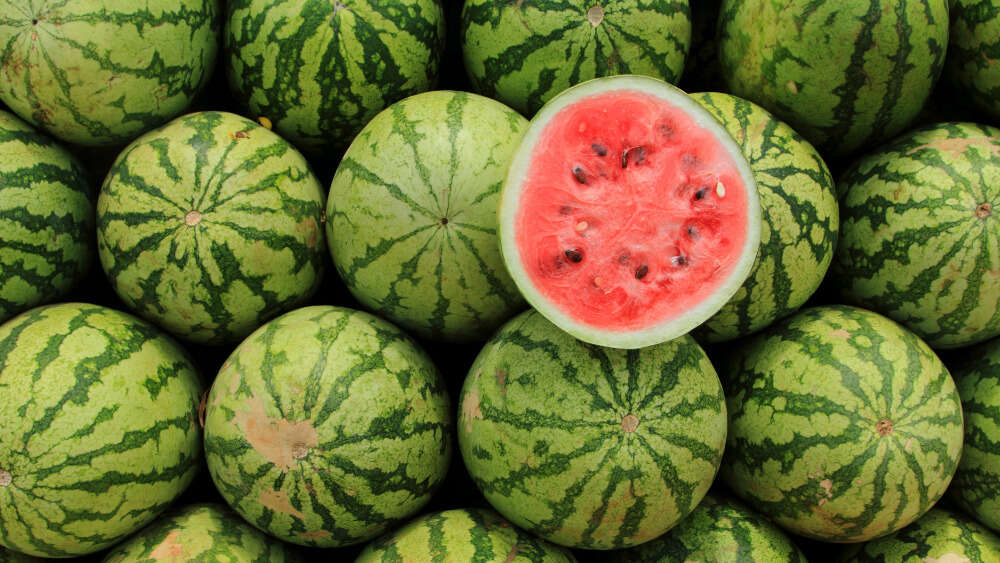Did Jesus take TikTok's watermelon challenge?
(And is watermelon really in the Bible?)
Trying to pick the next trend to go viral online is virtually impossible. Who expected the combination of yellow mustard with watermelon to become a social media craze?
In the same way that coffee brings out the flavour of chocolate, or salt with caramel (and, well, everything), some started to claim the peppery bite of mustard makes watermelon sing.
Turns out plenty of people out there wanted to test this and, in no time, videos of the condiment-doused fruit being consumed have blown up all over the place. Despite looking unappetising, some people didn’t mind it. Some even can’t get enough of it.
Like all good online trends, it contains a side of idiosyncrasy. From chefs creating a gourmet version, to someone cooking a hot watermelon and mustard noodle ramen.
While some have loved it, it definitely hasn’t been popular with everyone.
But this may not be the first time that the watermelon challenge has done the rounds. Egypt is known to be the home of the mustard seed and a new study has found the watermelon also likely originated from the River Nile region.
Perhaps it is not too much of a stretch, then, to suggest this online fad is not the first time these unlikely flavours have been combined?
Amanda Borschel-Dan in The Times of Israel writes about the recent study, led by botanist Susanne Renner, into the origins of watermelon. Using genetic sequencing, watermelon was traced by Renner’s team to Sudan – Egypt’s neighbour, linked by the Nile.
As Borschel-Dan points out, watermelon is even mentioned in Numbers 11:5-6 as the Israelite people wander the desert after being freed from slavery in Egypt. In some of the oldest pages in the Bible, the Exodus account at this point shows God’s people forgetting the torture of captivity and, instead, lamenting the variety of tastes they had: “We remember the fish we ate in Egypt at no cost, the cucumbers and the watermelons, and the leeks, onions and garlic…” [Note: Most English translations include ‘melons’, not ‘watermelons’ but there is a case to be made in the original Hebrew language for rendering it ‘watermelons‘, as Borschel-Dan quotes]
Borschel-Dan brings together the Numbers reference and Renner’s study: “This cameo biblical appearance corresponds with archaeological evidence found in Egypt, including 3,300-year-old watermelon seeds buried with the ancient Egyptian King Tutankhamun and a new interpretation of a 4,300-year-old tomb painting in Egypt that Renner believes is the earliest depiction of watermelon served as a dessert.”
While mustard seeds don’t get much of a look in throughout the Old Testament – in the Egyptian setting, or elsewhere – they do come in for special focus in the New Testament.
Famously, Jesus stated that faith the ‘size of a mustard seed’ could move mountains (Matthew 17:20) and that the size and scope of the Kingdom of God is like a tiny mustard seed that is planted and grows exponentially.
Aso, when Jesus was a boy, he did live in Egypt – the home of mustard seeds and watermelon. So, perhaps God’s Son dabbled in the TikTok taste sensation.


